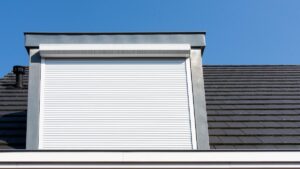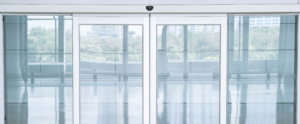
What are the benefits of curtain walls?
- August 17, 2023
- admin

In the realm of ultramodern armature, curtain walls have surfaced as a prominent design affect that seamlessly merges aesthetics, functionality, and sustainability. These protean structure envelopes offer a plethora of benefits, from enhancing energy effectiveness to furnishing stunning visual appeal. As a leading provider of architectural results, United Shopfronts is also to slip light on the advantages that curtain walls bring to the table.
Curtain Walls Architectural fineness and Versatility
“Architectural fineness and Versatility” refers to the aesthetic beauty and inflexibility that curtain walls bring to ultramodern structure design. Curtain walls serve as a oil painting oil for engineers and contrivers to express their creativity by combining colorful paraphernalia, textures, and homestretches. This creative freedom allows for the creation of visually stunning facades that can feed to a wide range of architectural styles and preferences. Whether it’s a satiny and ultramodern glass face or a mix of different paraphernalia to achieve a specific look, curtain walls offer endless possibilities to enhance the overall visual appeal of a structure while maintaining structural integrity. This generality highlights how curtain walls not only contribute to the attractiveness of a structure but also give a flexible platform for architectural invention and cultural expression.
Curtain Walls Abundant Natural Light
“Abundant Natural Light” refers to the ample daylight that enters a structure’s interior spaces through the use of curtain walls. These walls are designed with large fields of glass panels, allowing sun to pierce deep into the structure. This cornucopia of natural light creates a bright and inviting atmosphere, reducing the need for artificial lighting during daylight hours. Not only does this enhance the overall air and aesthetics of the space, but it also promotes a healthier and more comfortable terrain for inhabitants. Abundant natural light has been linked to bettered mood, productivity, and well- being, making curtain walls an effective way to harness the benefits of sun and produce affable inner spaces.
Curtain Walls Energy Efficiency
“Energy effectiveness” refers to the practice of using lower energy to achieve the same position of asked affair or performance. In the terrain of curtain walls, energy effectiveness refers to the capability of these erecting envelopes to minimize energy consumption and waste. Curtain walls are designed with features similar as advanced sequestration paraphernalia and double or triadic glazing to reduce heat transfer between the innards and face of a structure. By precluding devilish heat loss during cold downfall and minimizing heat gain during hot downfall, curtain walls contribute to maintaining a more stable inner temperature. This results in reduced reliance on heating and cooling systems, leading to lower energy consumption, dropped mileage costs, and a lower carbon footmark. In substance, energy-effective curtain walls play a vital part in creating environmentally responsible and economically sustainable structures.
Thermal Comfort and Acoustic Insulation
“Thermal comfort” refers to the state of feeling pleasantly warm or cool within an inner terrain. In the terrain of curtain walls, thermal comfort is achieved through effective sequestration and temperature regulation. Curtain walls are designed with features similar as thermal breaks and high- quality sequestration paraphernalia that help maintain harmonious inner temperatures. This prevents drafts, cold spots, and devilish heat, icing inhabitants’ comfort throughout the time.
“Audial sequestration” pertains to the reduction of sound transmission from outside sources or between different interior spaces. Curtain walls can contribute to audial sequestration by incorporating sound- absorbing paraphernalia and design ways. By minimizing external noise pollution and containing internal sounds, curtain walls produce a quieter and more peaceful inner terrain. This enhances inhabitants’ well- being and productivity by reducing distractions and promoting a conducive atmosphere for work, relaxation, or other exertion.
Structural Integrity
” Structural integrity” refers to the capability of a structure or structure to repel external forces, loads, and stresses without passing failure or compromising its stability. In the terrain of curtain walls, structural integrity involves the design and construction of the walls to support their own weight, as well as the forces applied by factors like wind, snow, and seismic exertion. Curtain walls are finagled to distribute these forces equally across the structure, icing that the structure remains secure and safe.
Curtain walls contribute to the overall structural integrity of a structure by effectively transferring loads to the structure’s primary structural system, similar as columns and shafts. The paraphernalia used in curtain walls, similar as aluminum architecture and corroborated glass, are chosen for their strength and continuity. By maintaining structural integrity, curtain walls enable engineers to produce larger and more open interior spaces while still icing the safety and stability of the entire structure.
Ease of conservation
“Ease of conservation” refers to the convenience and simplicity with which a element, system, or structure can be gutted, repaired, or serviced over time. In the terrain of curtain walls, ease of conservation refers to the design and construction features that make it straightforward to keep the walls in good condition and address any issues that may arise.
Curtain walls are constantly constructed using durable and downfall- resistant paraphernalia, similar as aluminum and high- quality glass, which are chosen for their life and resistance to erosion. also, the design of curtain walls includes considerations for easy access to the face face for cleaning and conservation purposes. This might involve features like removable panels or integrated conservation systems.
By incorporating rudiments that grease regular keep and repairs, curtain walls reduce the need for complex and time- consuming conservation procedures. This not only helps save the aesthetic appeal of the structure but also contributes to its long- term functionality and sustainability. structures with curtain walls can maintain their visual attractiveness and structural integrity with fairly minimum trouble and coffers over the times.
Quick Installation and Retrofitting
“Quick installation” in the terrain of curtain walls refers to the effective and streamlined process of assembling and installing these erecting envelopes onto a structure. Curtain walls are designed for ease of installation, constantly involving prefabricated factors that can be snappily assembled on- point. This can lead to reduced construction timelines, allowing the structure to be enclosed and defended from the rudiments sooner. The effective installation process also contributes to overall design cost savings.
“Retrofitting” involves the process of elevation or modifying an being structure or structure to meliorate its functionality, aesthetics, or performance. In the terrain of curtain walls, retrofitting refers to the installation of curtain wall systems onto an formerly erected structure. This can transfigure an outdated or visually unpleasing structure facade into a ultramodern and visually striking one. Retrofitting with curtain walls allows for a significant aesthetic upgrade without the need for expansive obliteration or reconstruction, making it a cost-effective and sustainable result for revitalizing aged structures.
Both quick installation and retrofitting illuminate the versatility and inflexibility of curtain walls as architectural rudiments. They offer the advantage of effective construction for new structures while also furnishing an innovative way to refresh and contemporize being structures.
Conclusion
In the dynamic world of ultramodern armature, curtain walls stand out as a testament to invention and functionality. Their capability to seamlessly integrate aesthetic appeal, energy effectiveness, and structural integrity makes them a favored choice among engineers, inventors, and structure possessors. At United Shopfronts, we fete the unarguable benefits that curtain walls bring to architectural systems. By embracing these protean structure envelopes, we not only elevate the visual impact of structures but also contribute to a more sustainable and energy-effective future.
FAQs
- What are curtain walls?
Curtain walls arenon- structural face structure envelopes made primarily of glass, substance, and other paraphernalia. They serve as a defensive hedge against the rudiments while enhancing the aesthetics and energy effectiveness of a structure.
- How do curtain walls contribute to architectural fineness?
Curtain walls allow engineers to produce visually stunning facades by combining colorful paraphernalia, textures, and homestretches. This design harshness results in eye- catching shells that round a wide range of architectural styles.
- Are curtain walls energy-effective?
Yes, curtain walls can significantly enhance a structure’s energy effectiveness. With features like advanced sequestration andmulti- concentrated glazing, they minimize heat transfer, reduce heating and cooling conditions, and lower energy consumption.
- How do curtain walls give abundant natural light?
Curtain walls incorporate expansive glass panels that allow ample daylight to pierce innards spaces. This promotes a bright and inviting atmosphere, reducing the need for artificial lighting and serving inhabitants’ well- being.
- What’s thermal comfort, and how do curtain walls contribute to it?
Thermal comfort refers to a affable inner temperature. Curtain walls with effective sequestration and temperature regulation features help maintain harmonious inner temperatures, icing tenant comfort and reducing energy use.
- Can curtain walls help with noise reduction?
Yes, curtain walls can contribute to audial sequestration by using sound- absorbing paraphernalia and design ways. They help minimize external noise pollution and produce a quieter inner terrain.
- What’s the structural integrity of curtain walls?
Structural integrity refers to a structure’s capability to repel external forces without compromising stability. Curtain walls are designed to distribute forces equally and transfer them to the structure’s main structure, icing overall stability and safety.
- How do curtain walls insure ease of conservation?
Curtain walls are constantly constructed with durable and downfall- resistant accouterments, making conservation simpler. Their design may include features that grease cleaning and keep, similar as removable panels or easy access to the face.
- Can curtain walls be snappily installed?
Yes, curtain walls are designed for effective installation, constantly involving prefabricated factors that can be assembled on- point. This speeds up the structure quadrangle process, leading to cost and time savings.
- Can curtain walls be added to structures?
Absolutely, curtain walls are generally used for retrofitting. They offer a cost-effective way to transfigure and contemporize the appearance of aged structures, enhancing their visual appeal without expansive reconstruction.





